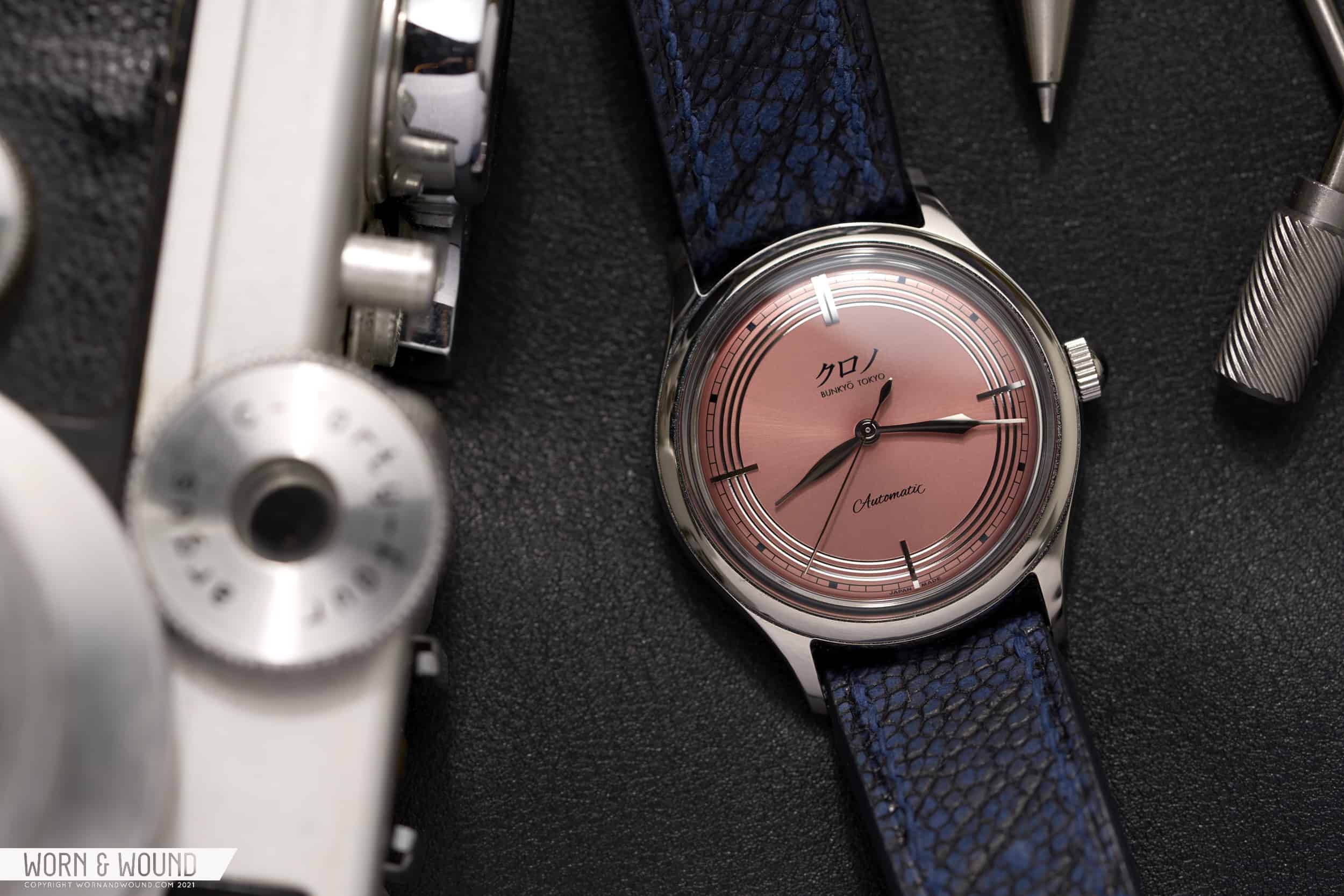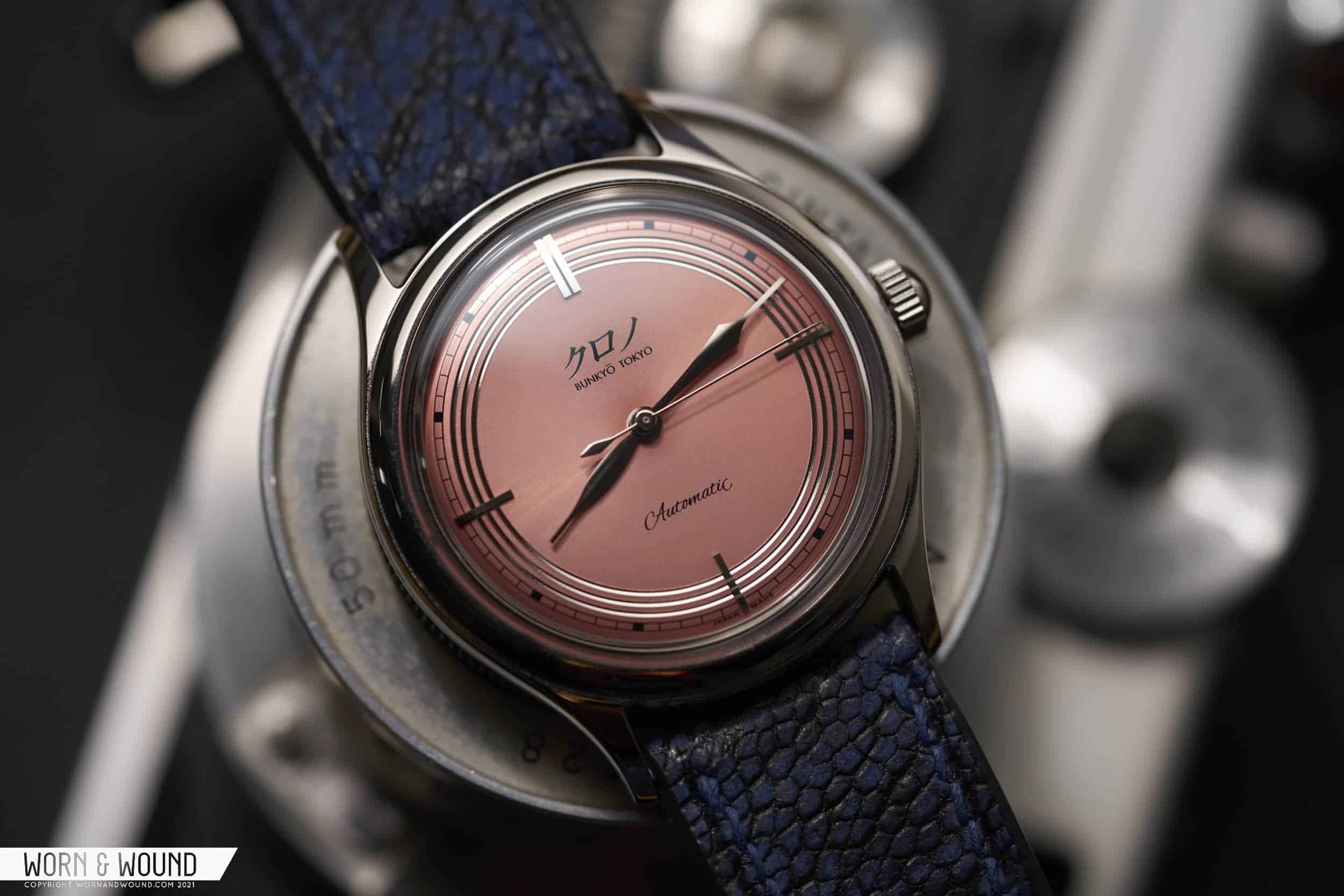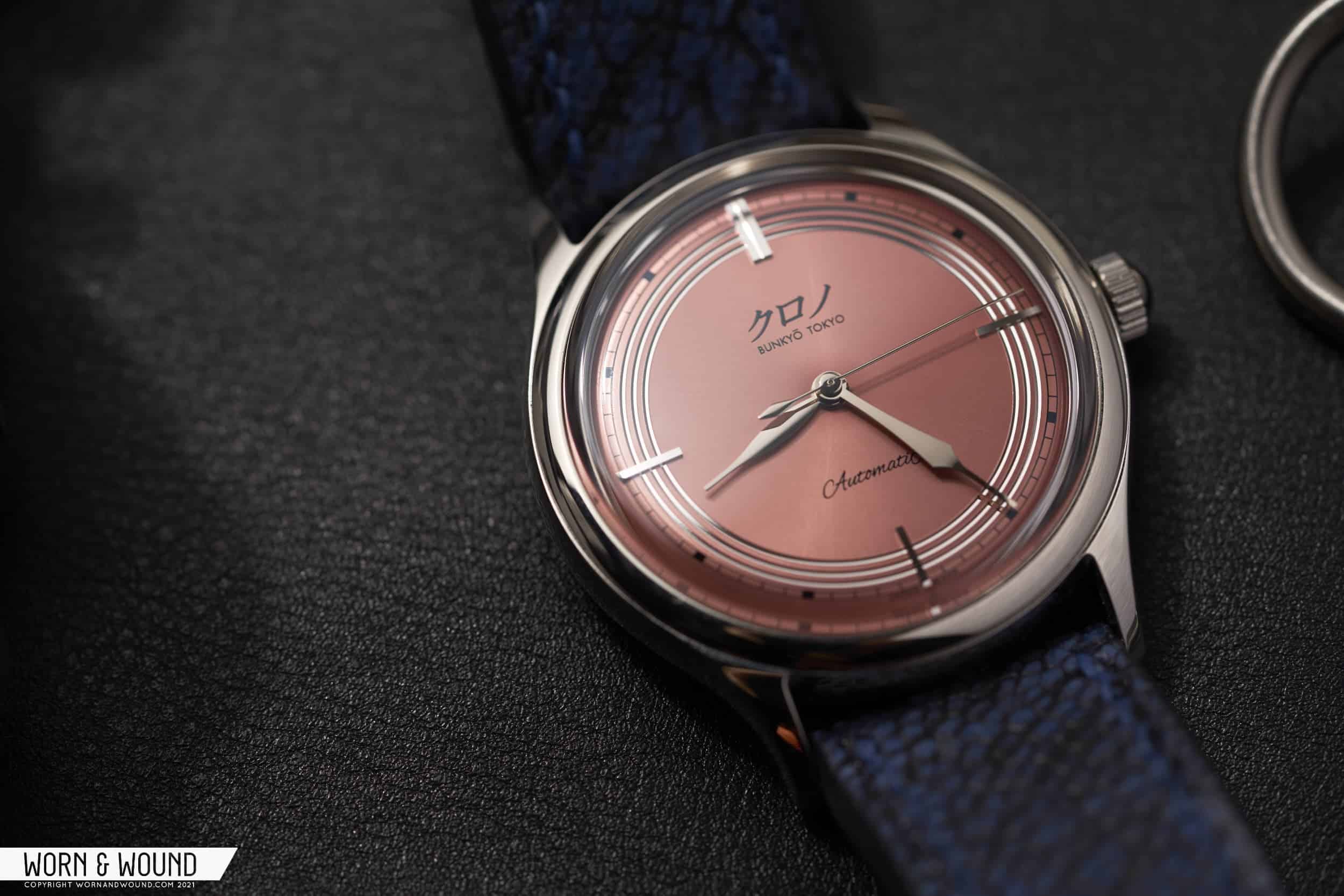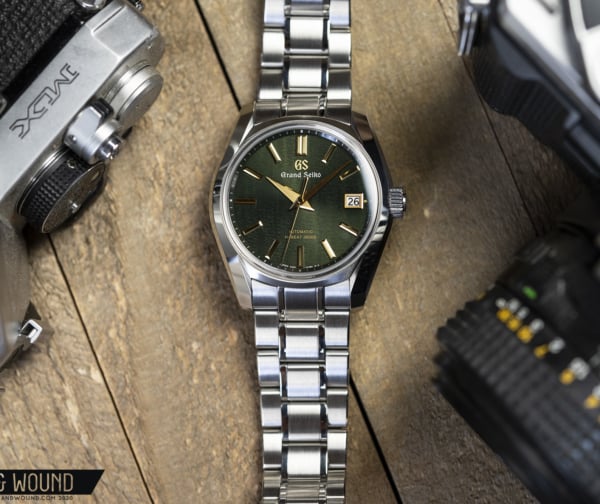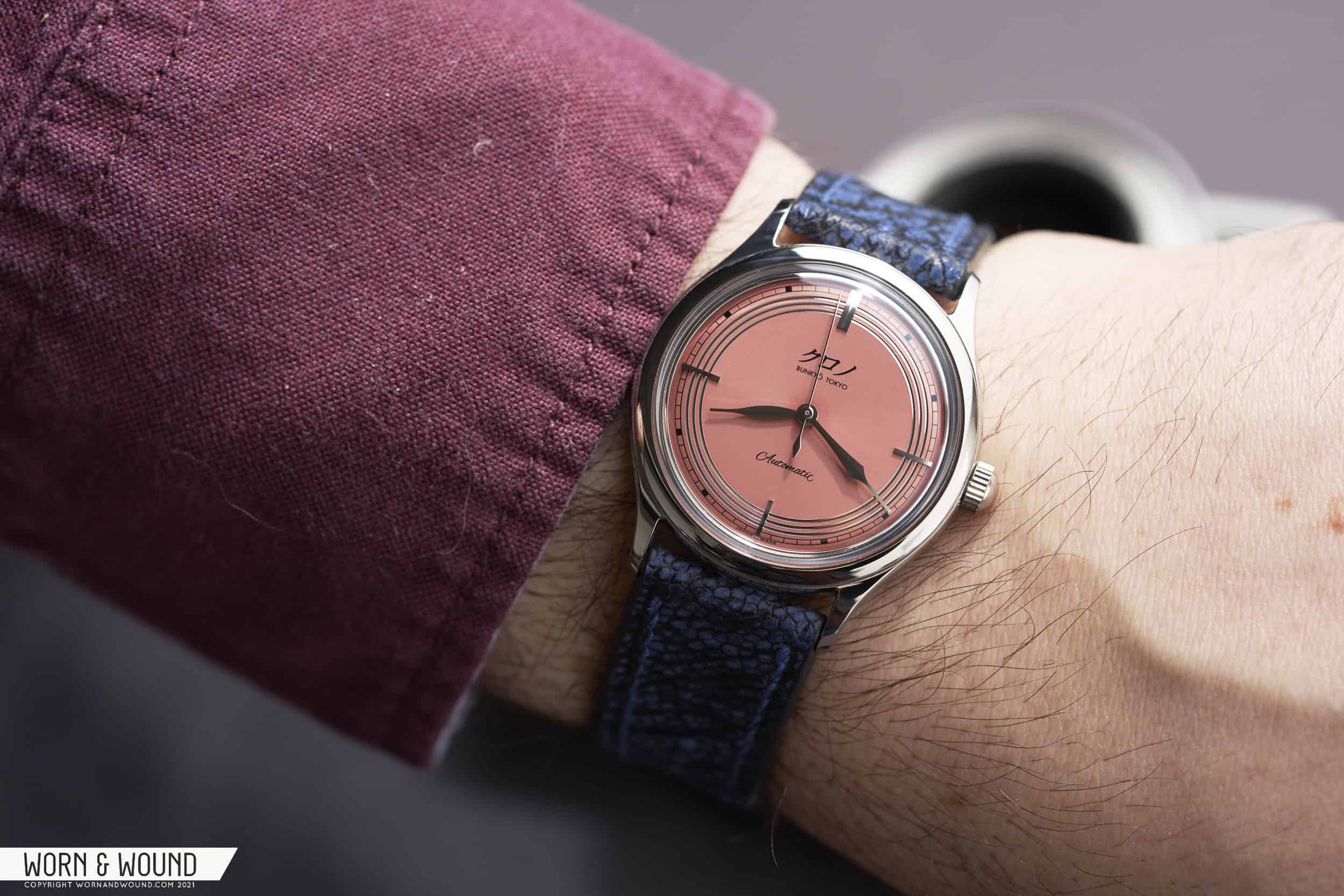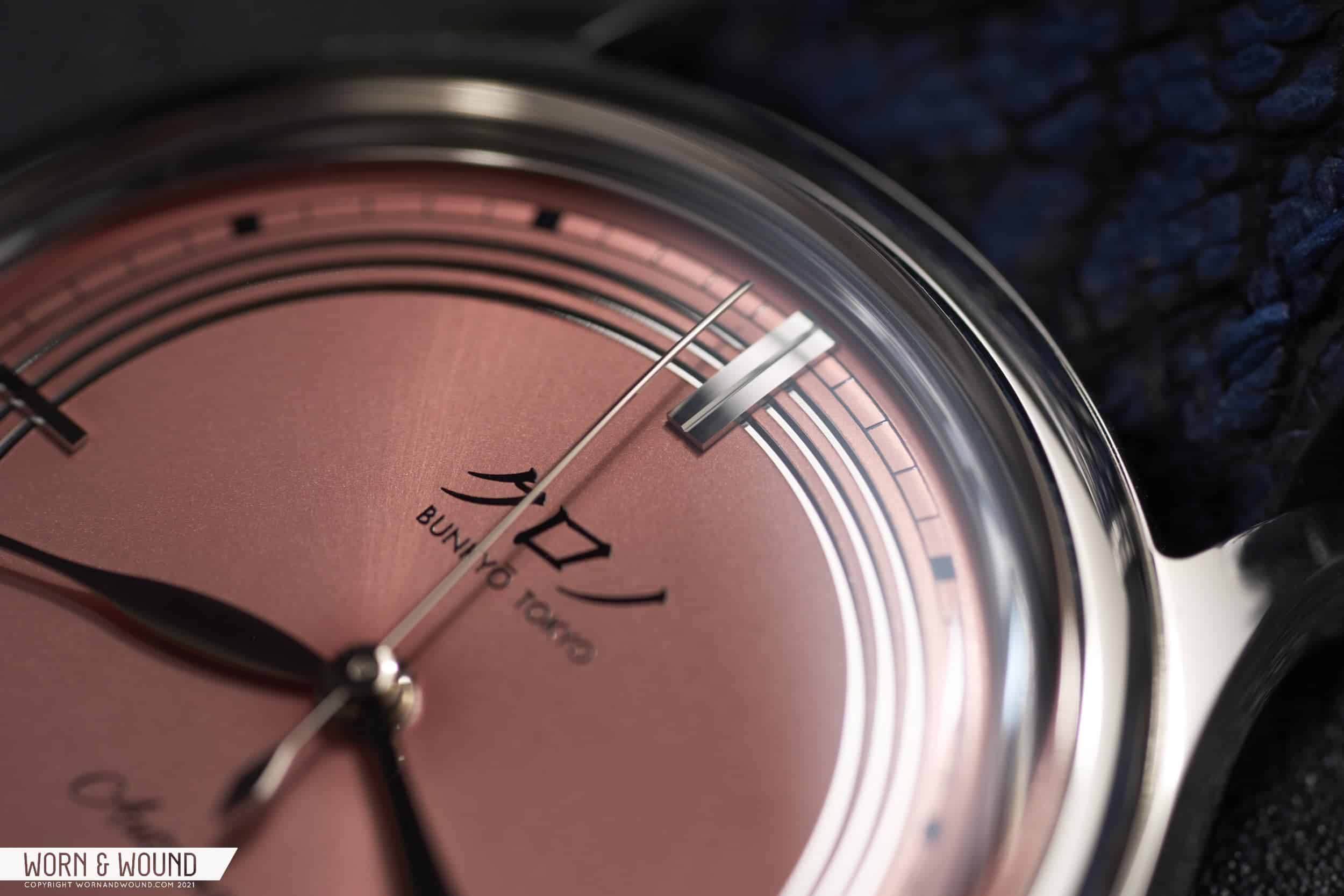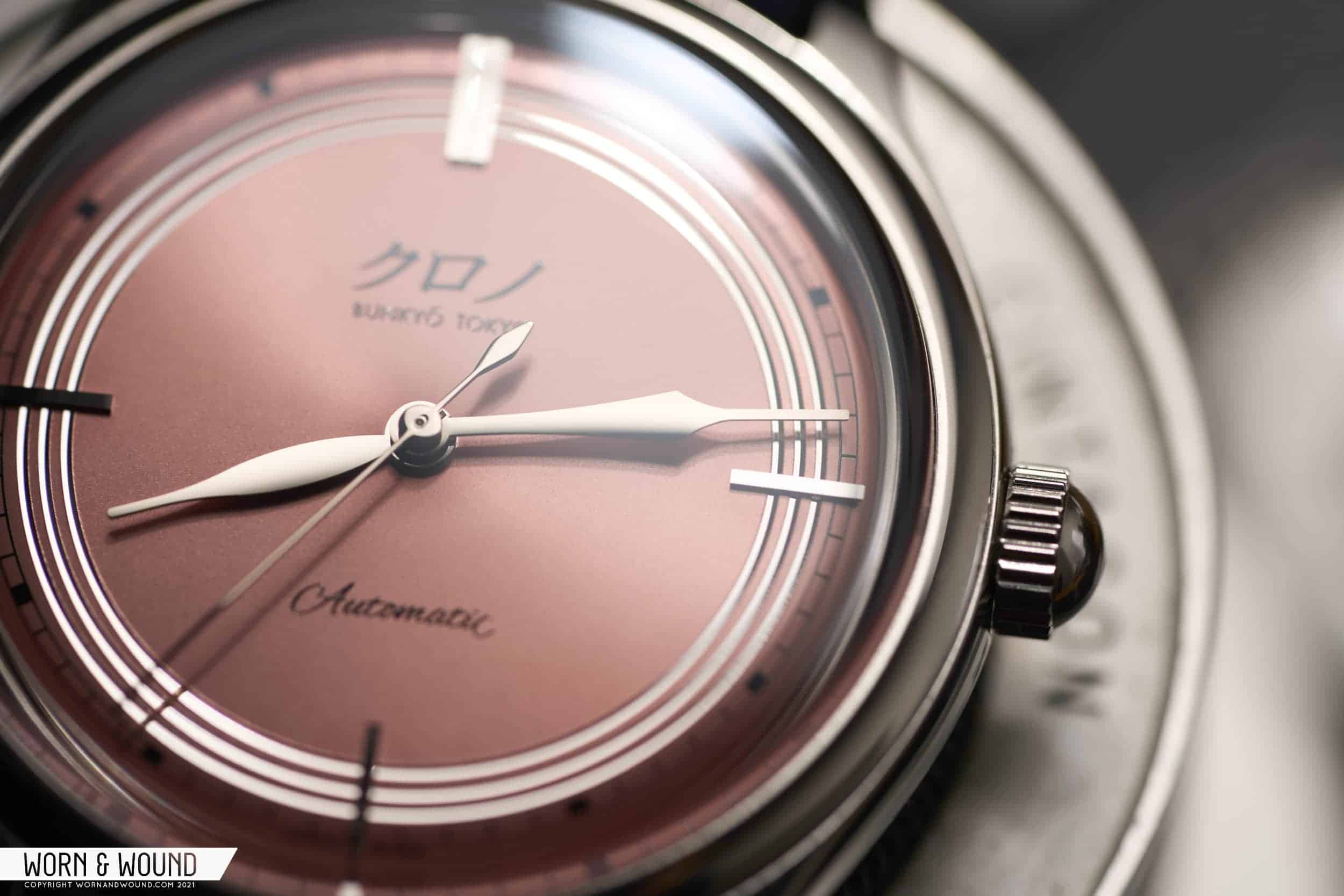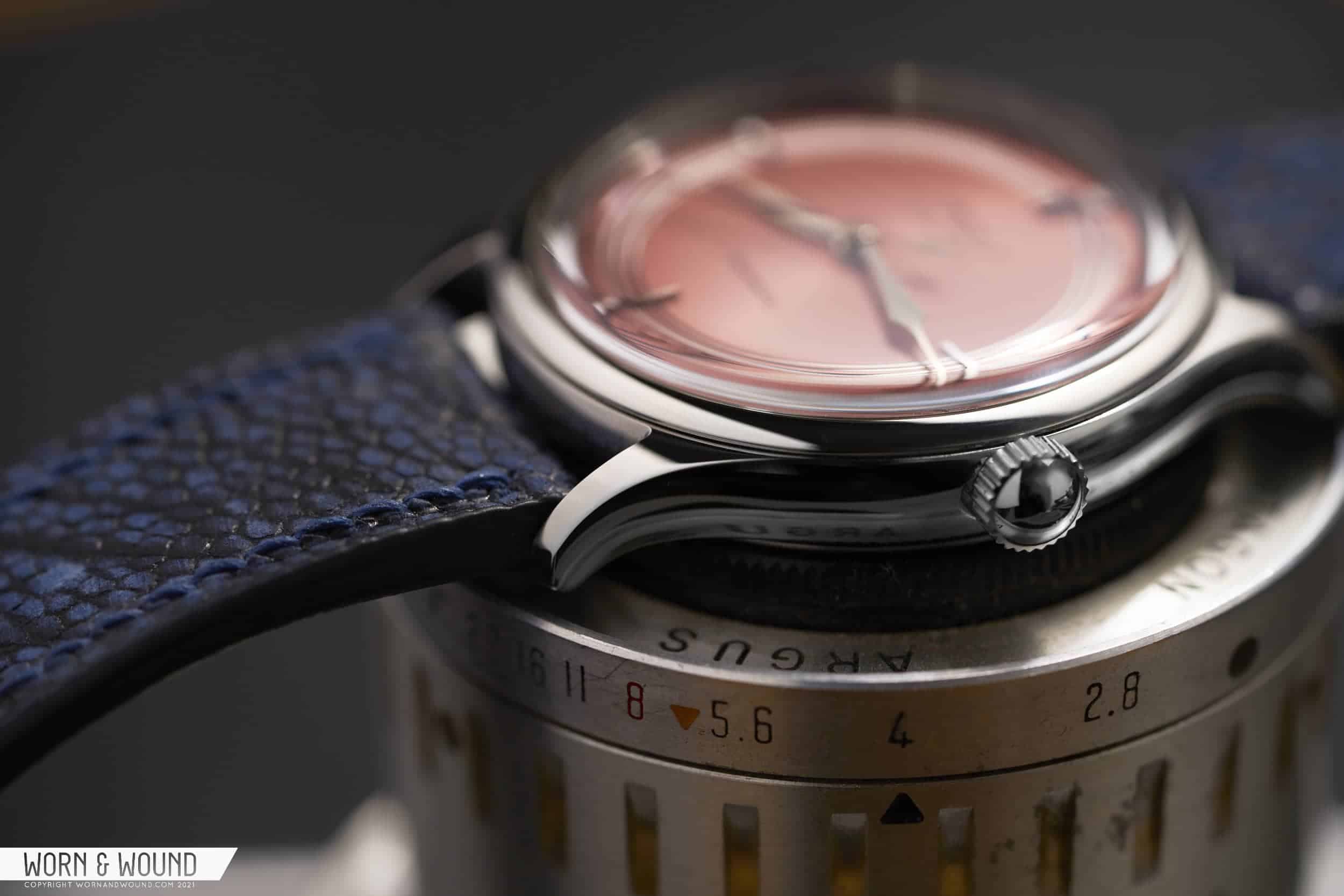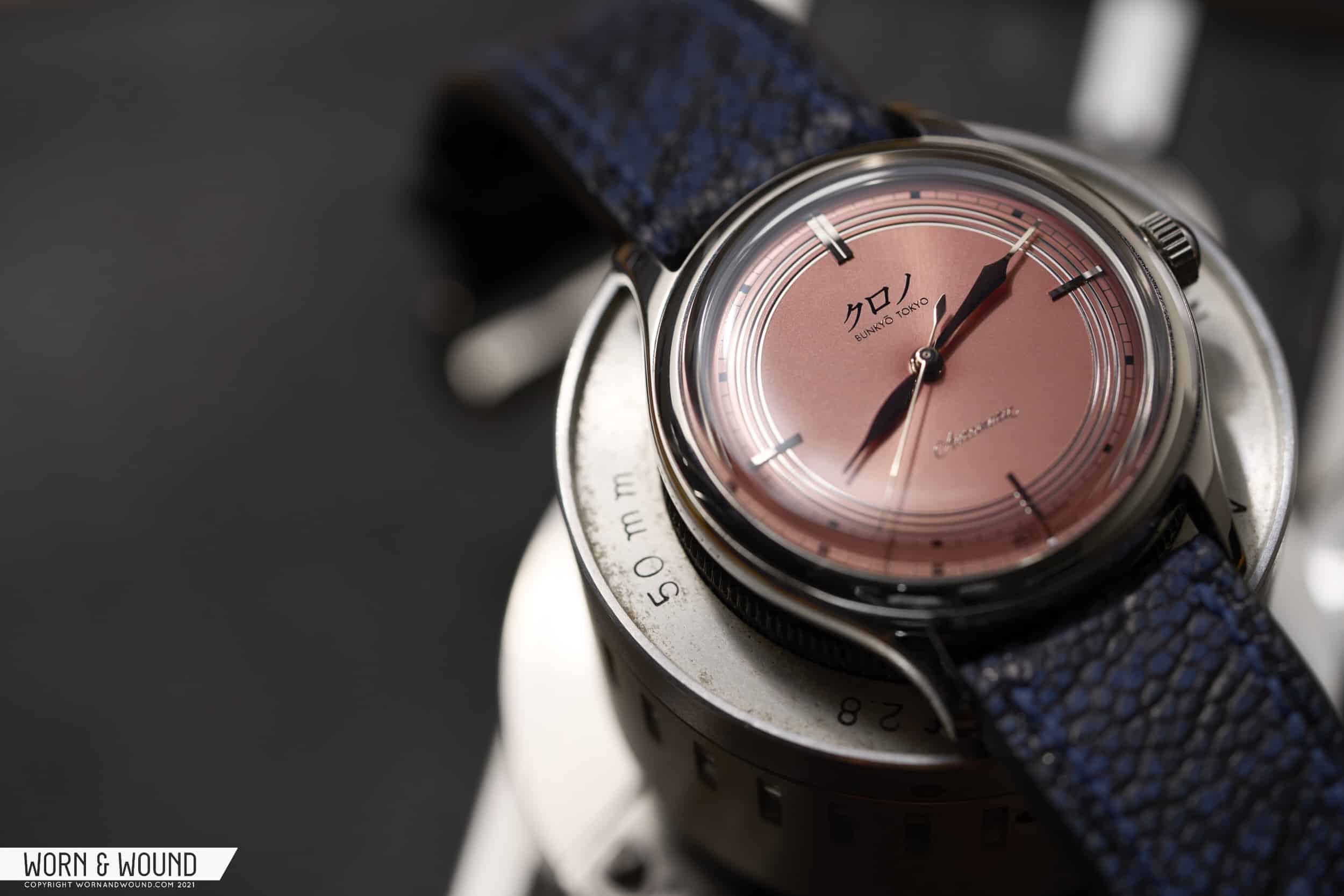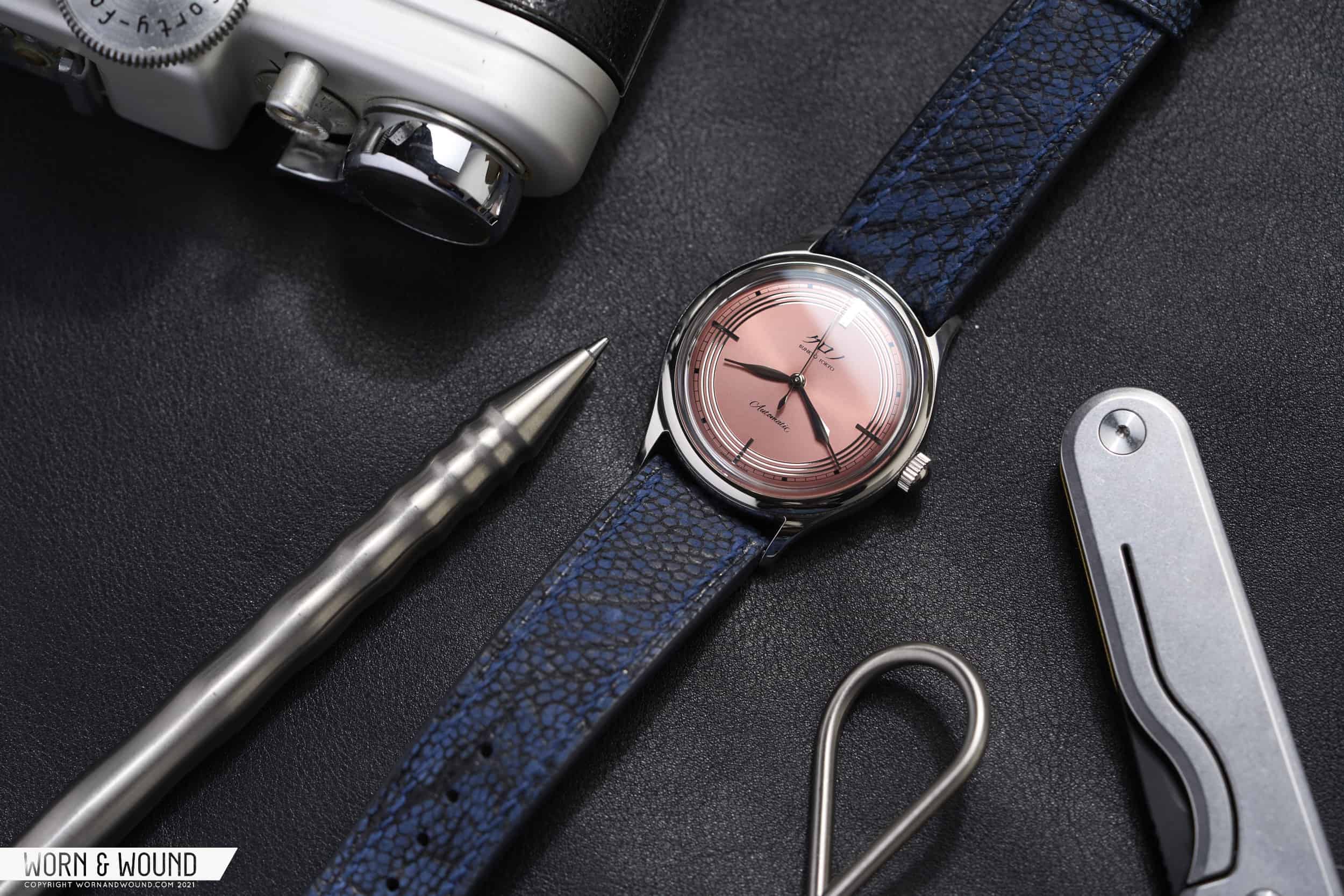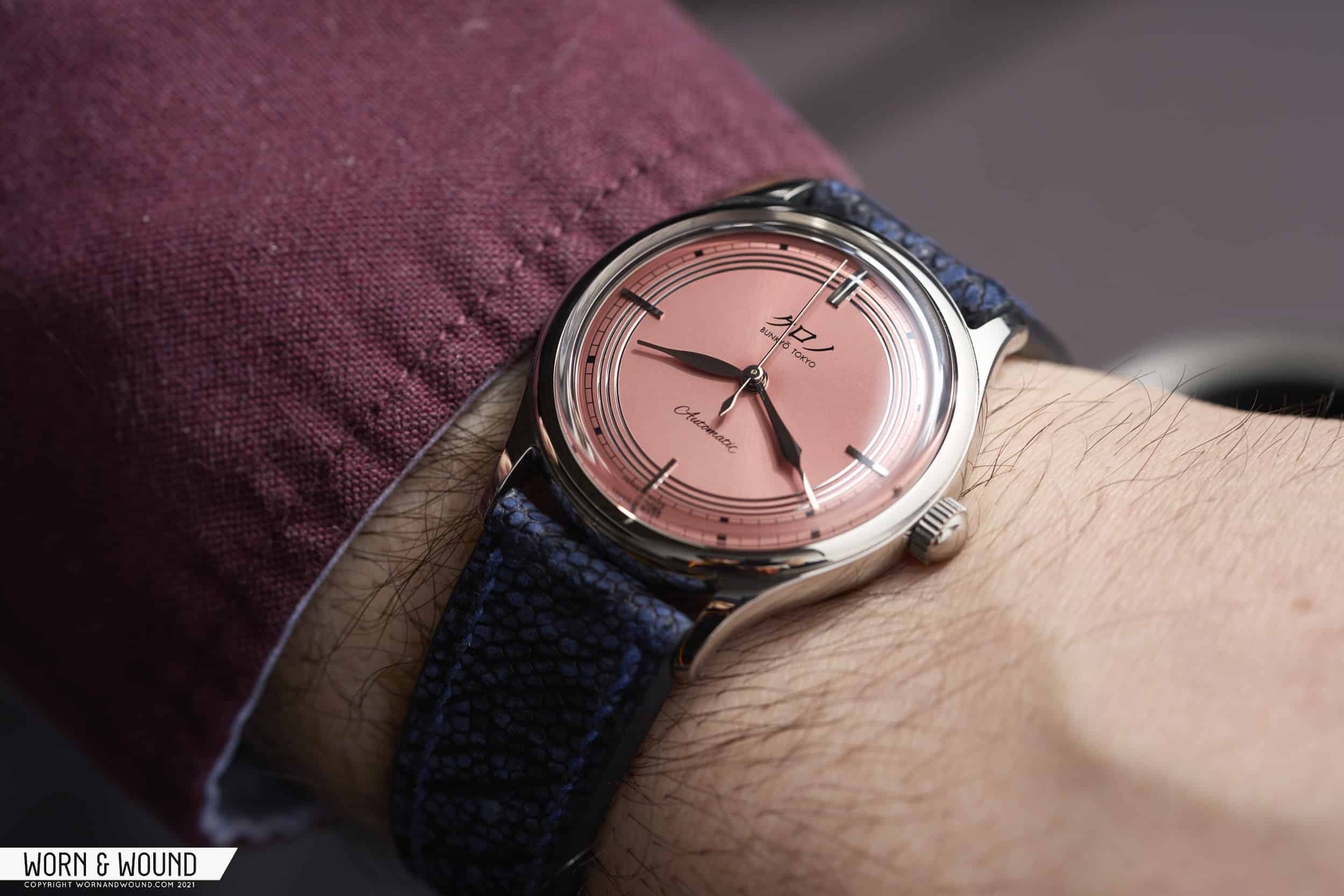A note on the Kurono Tokyo website explains the production, but leaves some open questions about exactly where the dial and case come from. Production is managed by Precision Watch Tokyo Co., Ltd, which is the same company backing Hajime Asaoka’s handcrafted watches. The note cagily explains that Precision Watch Tokyo has “brought together the same case and dial makers that supply to one of the most prestigious of Japanese watch brands,” which has plenty of people speculating about whether it’s that prestigious watch brand that most immediately comes to mind when those words in that combination tend to be written or spoken. Nobody is saying for sure, but one thing is clear: there’s a certain pride taken in that much of this watch seems to be produced in Japan, so a Miyota movement is not only a solid practical choice, but it’s in keeping with some of the thematic ideas behind Kurono as a brand as well.
Since this is an owner’s review, I think it’s fair to comment on the full scope of the ownership experience, including the fact that these watches (and all watches Kurono releases) are inevitably snapped up by a good number of speculators, and that there’s an ongoing dialog in the watch community about the ethics of that. Kurono makes it very clear in their marketing communication and on their website that they want their watches in the hands of enthusiasts who intend to keep them, and not flip them for a profit. They’ve taken steps to keep flippers and the gray market away from their watches (only honoring warranty claims for the original owner for a set period of time, for example, and using technology to kick suspected flippers out of line in the electronic queue). They also tend to make an undisclosed number of watches available for current owners first, before they go on sale to the general public. The reasoning, I think, is that folks who buy more than one (and make it through Kurono’s vetting) are less likely to sell on the secondary market. If you’re interested, there’s an extensive “Terms and Conditions of Sale” page on their website, and it makes for more interesting reading than similar pages on the websites of most other brands.
![]()
I have mixed feelings about all of this. Obviously, I bought my own Kurono on the secondary market, but from a collector who was willing to sell at Kurono’s retail price, keeping up with the spirit of the original transaction. I strongly believe that once a watch is yours, you should feel free to do whatever you want with it, including selling it for the highest price someone is willing to pay, but I applaud Kurono for taking a position on the matter at all. Most brands are simply silent, but I believe Kurono (and Hajime Asaoka himself) is genuinely interested in putting these watches on the wrists of collectors at a fair price.
One of the questions that inevitably comes up when discussing Kurono and how they release watches is how much control can and should a brand have over who buys their product? Kurono is trying to exert a level of control in this area that’s uncommon in the micro brand space, but is actually much more prevalent in the high horology world where Asaoka made a name for himself. Patek, Lange, and other brands require applications for certain high end pieces, after all. Do you think they’re inclined to sell those highly coveted watches to clients who will turn around and flip them to gray market dealers? The answer, of course, is no. What Kurono is doing is a version of that, but on a smaller scale.
![]()
After a long period of admiring the brand for afar, I’m glad to have a Kurono in my regular rotation, and I’m thrilled I was able to acquire one in a stress free fashion, after seeing photo evidence of what the watch looks like in the real world. The Toki has a ton of rewarding detail and is a pleasure to wear, and as a bonus it also happens to be an interesting snapshot of where the watch industry is at this very moment, a time when high end independent watchmakers are reaching into die-hard enthusiast circles and being enthusiastically accepted. It will be fascinating to see if other independent brands and watchmakers take a similar approach in the coming years, and what rewards might be in store for Asaoka for being early. Kurono









 Featured Videos
Featured Videos




